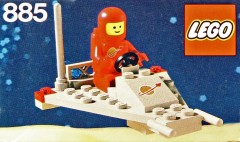
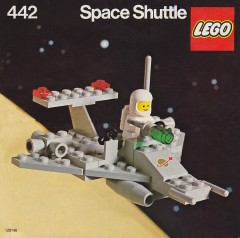




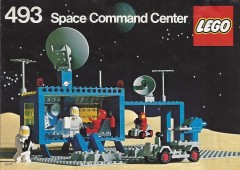

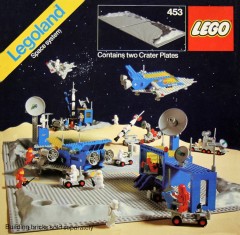
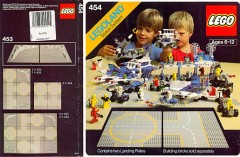

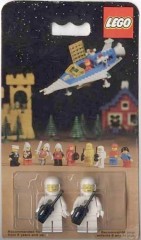

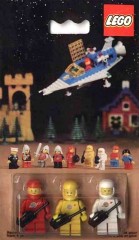


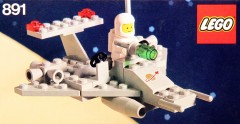





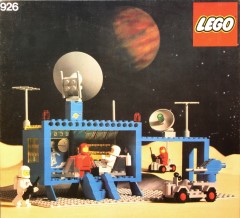
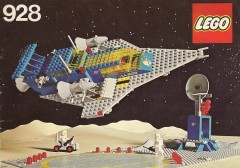


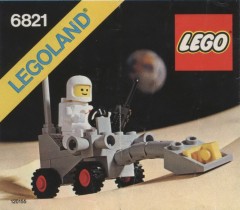

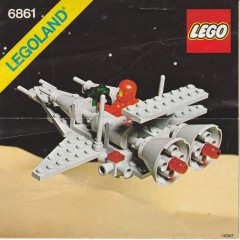
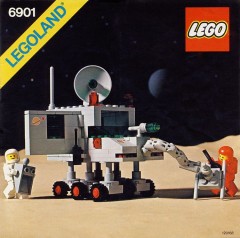
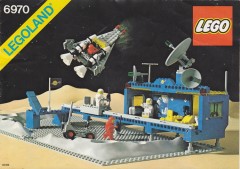
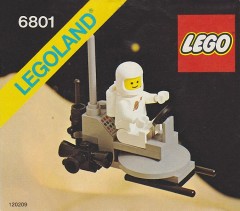
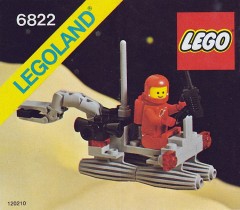



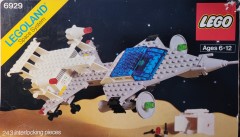

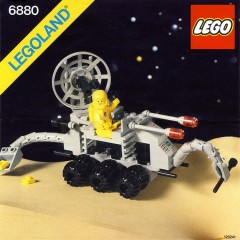
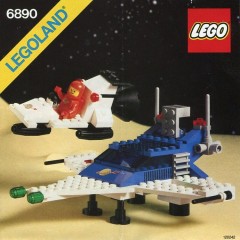
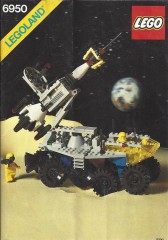



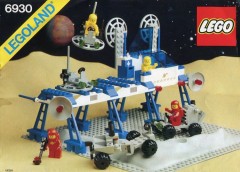
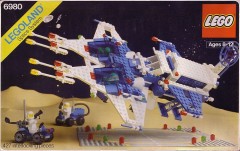

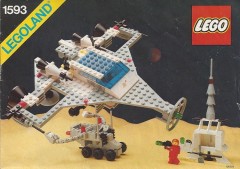
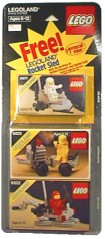
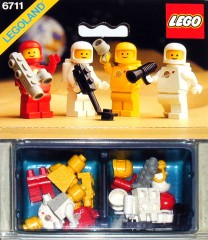
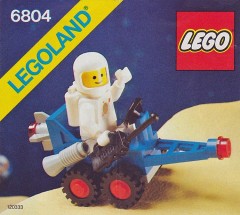

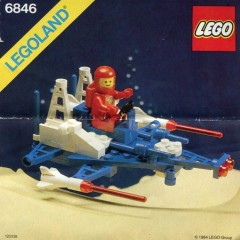
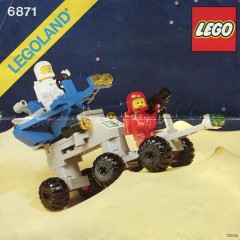
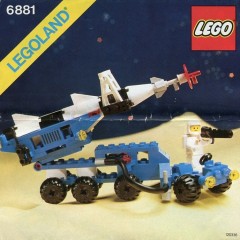
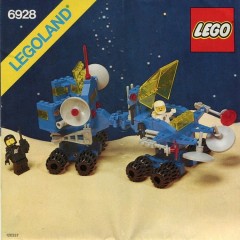
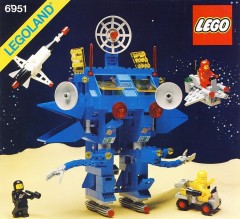
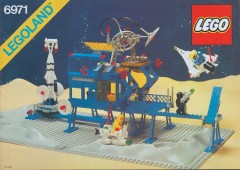
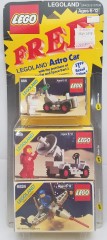
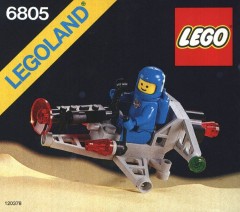
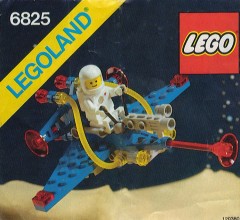

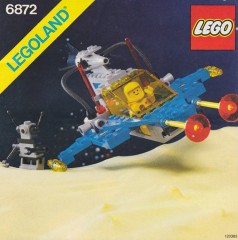
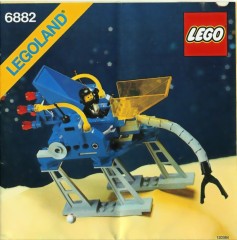
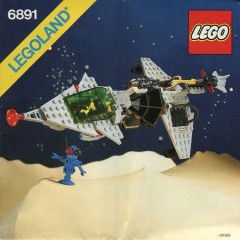
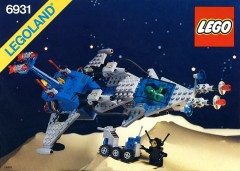

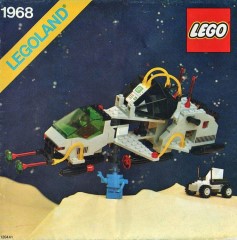
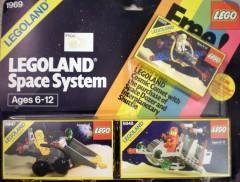
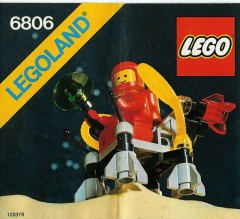
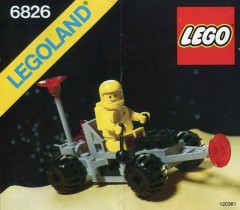
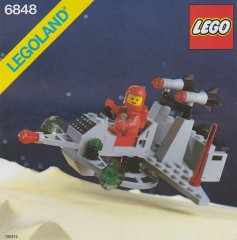
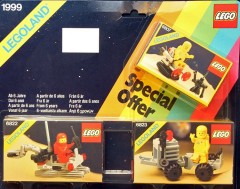
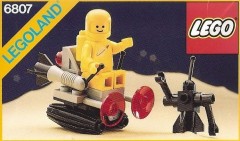
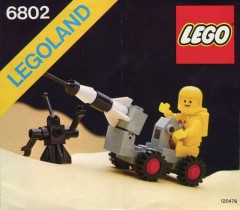

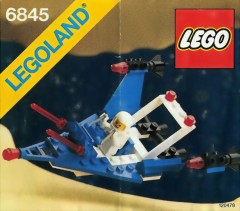
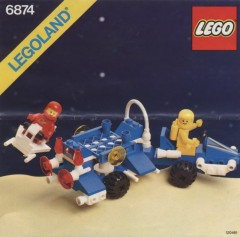
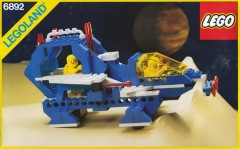
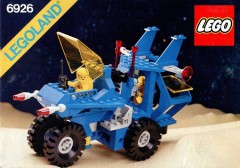
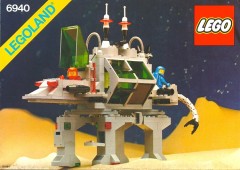
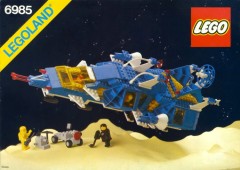
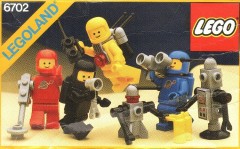
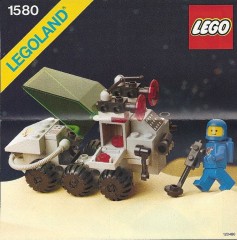
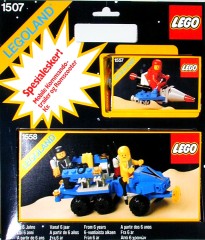

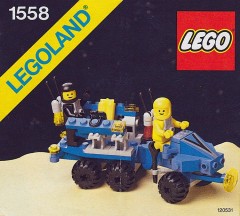
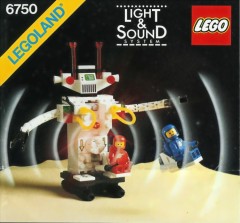

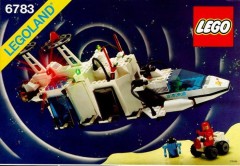
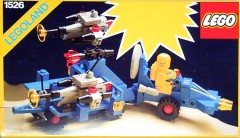

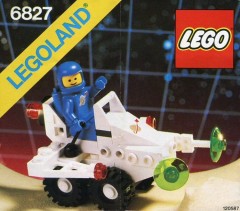



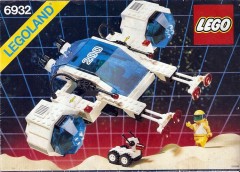
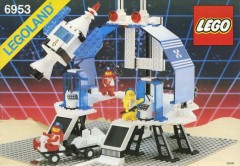
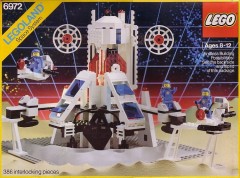
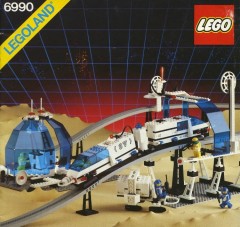
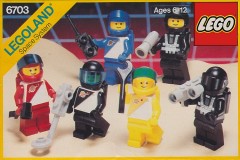
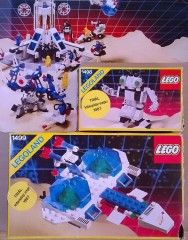
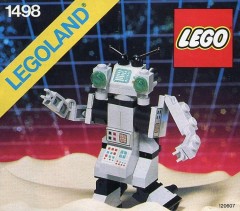
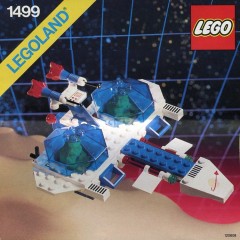

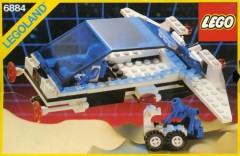

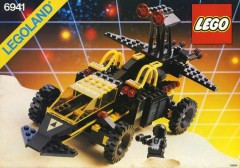
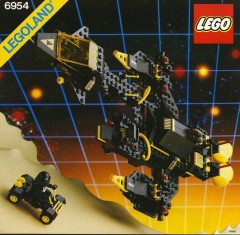

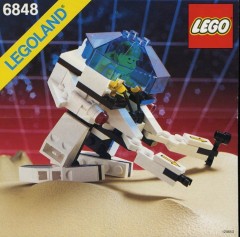
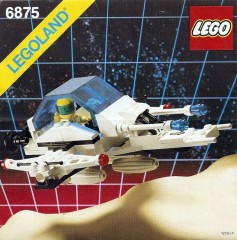


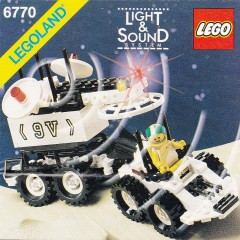
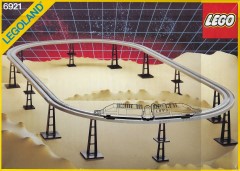
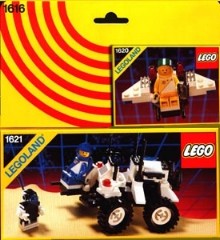
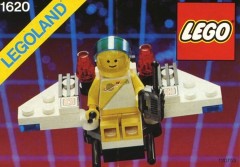
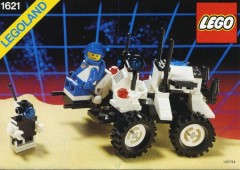
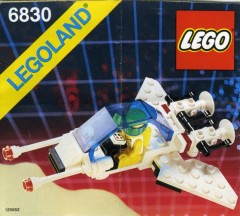
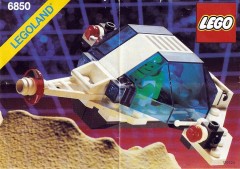
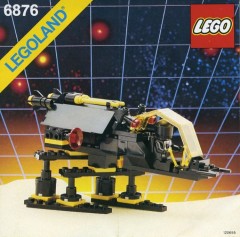

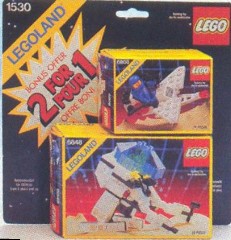
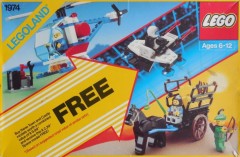
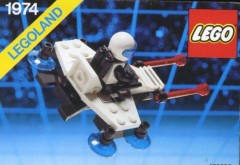


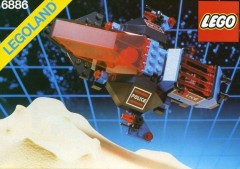
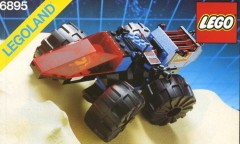
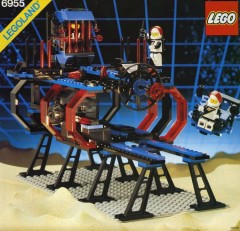

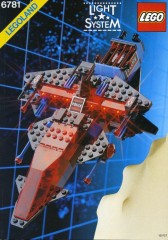
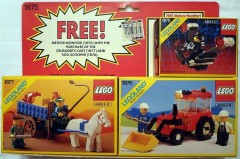
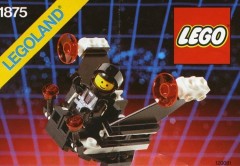


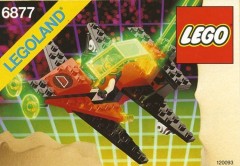
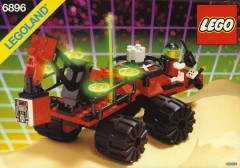



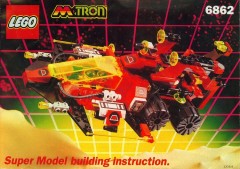

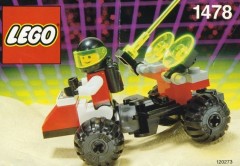
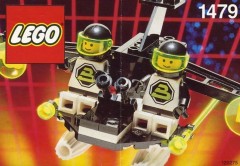

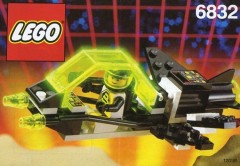

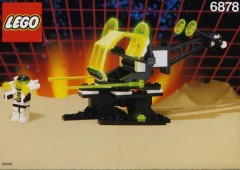

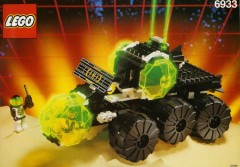

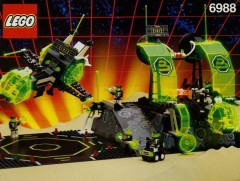



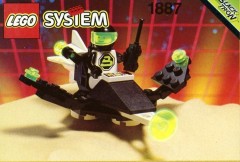

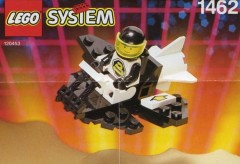
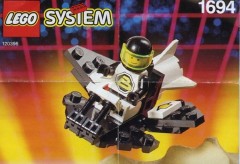
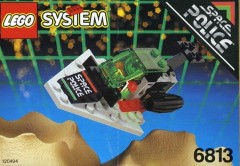


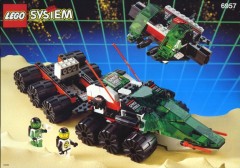
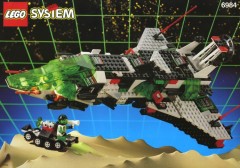

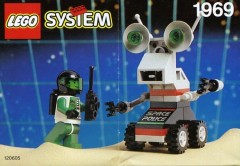
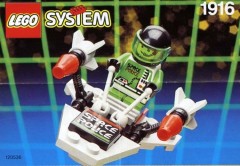
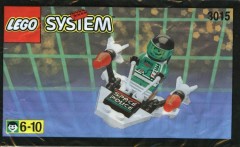
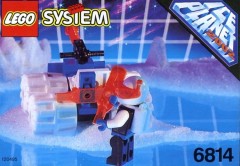
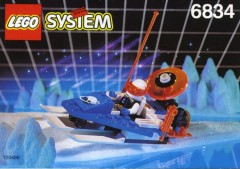
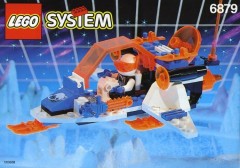

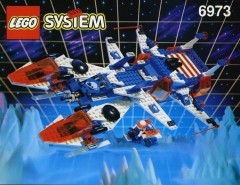
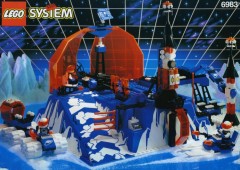
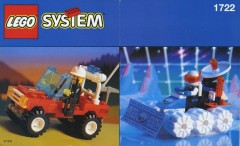
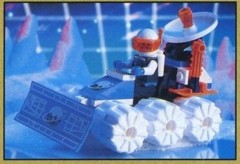


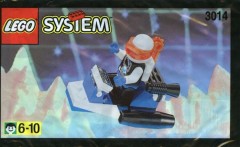
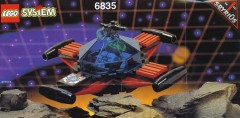
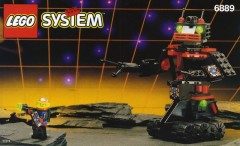

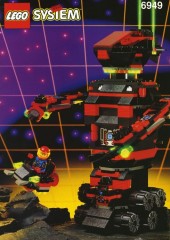
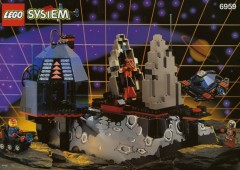

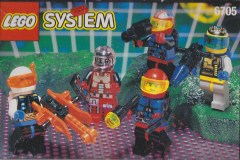
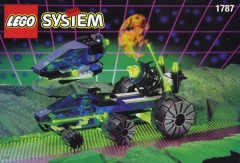
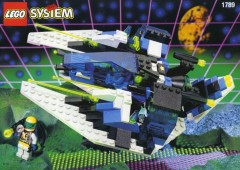
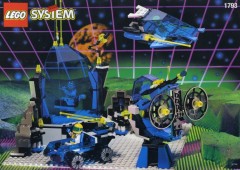

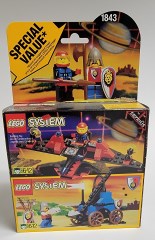
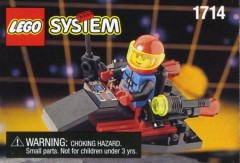
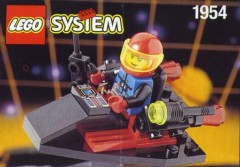
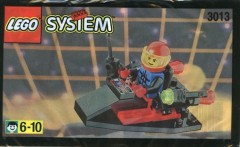
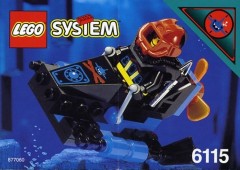
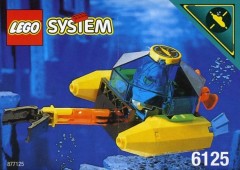
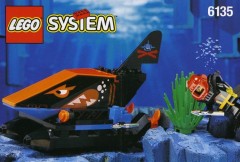
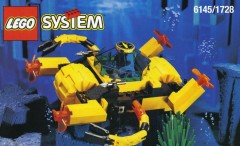
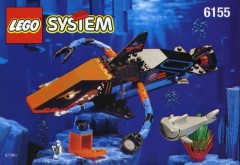
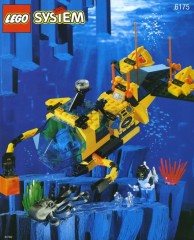
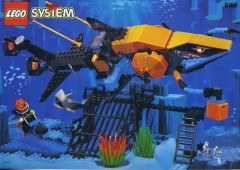
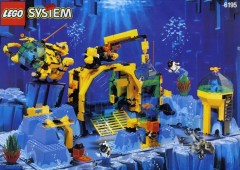
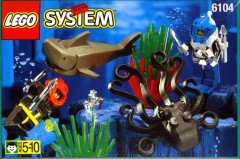
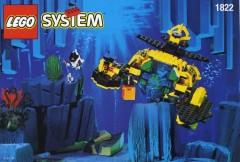
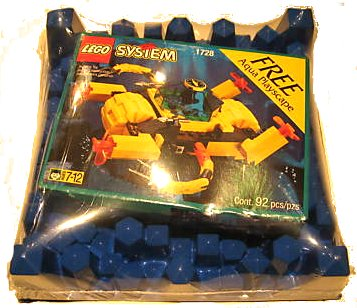
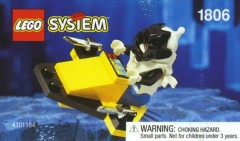

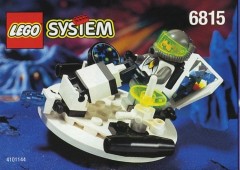
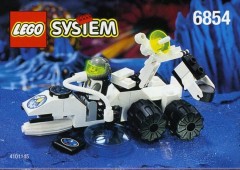

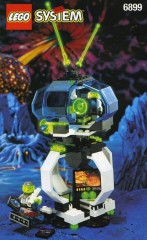
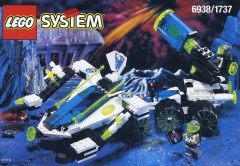
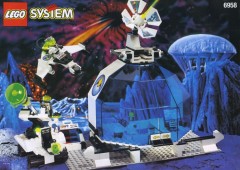
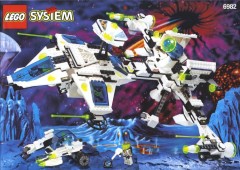
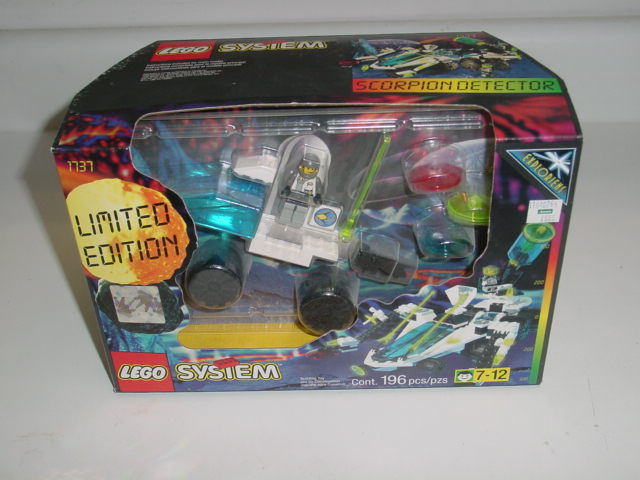
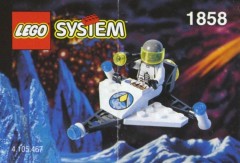
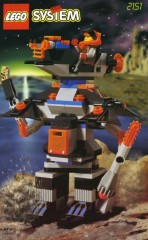
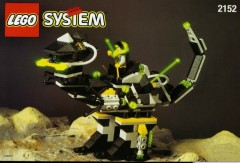

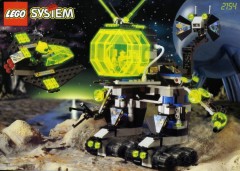
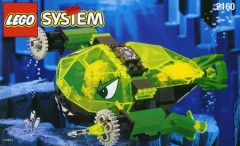
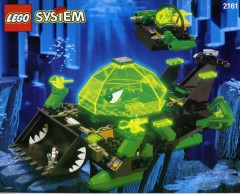
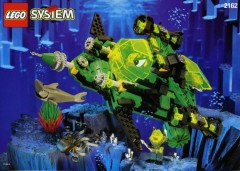
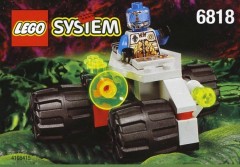
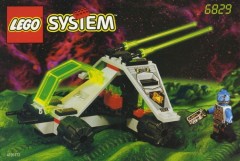
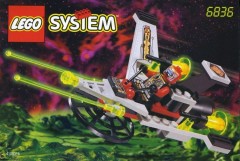
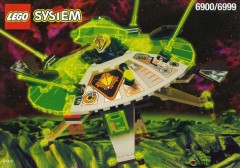
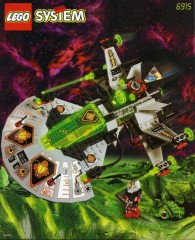
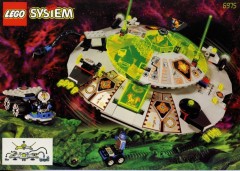

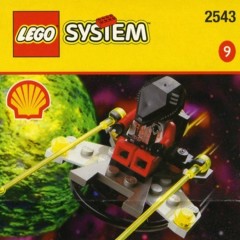


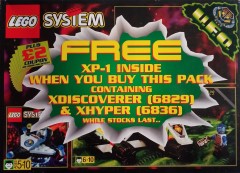


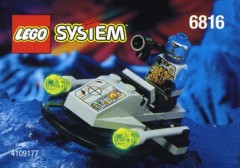

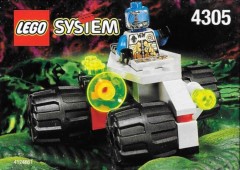
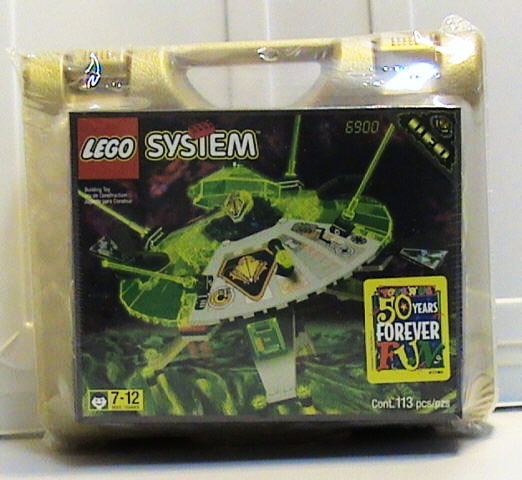
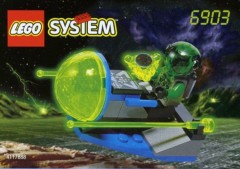
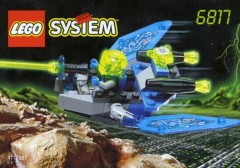
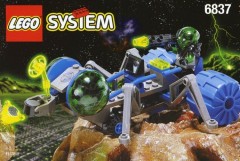
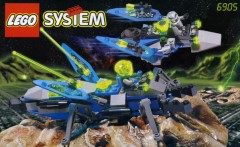
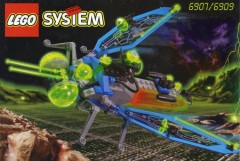
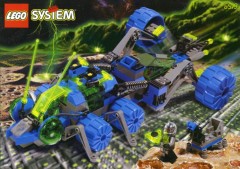
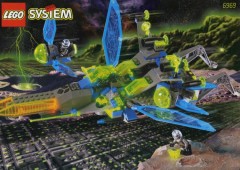
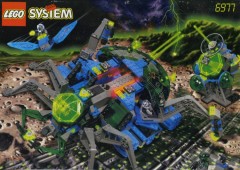
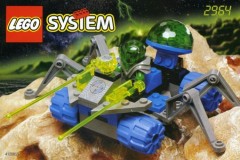
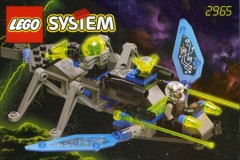
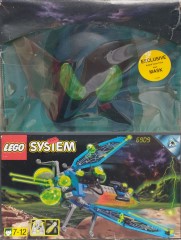
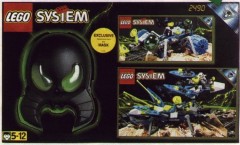
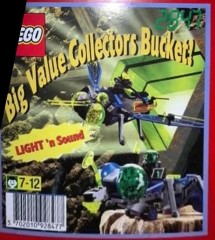
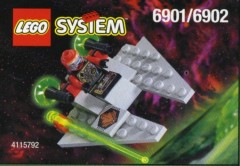
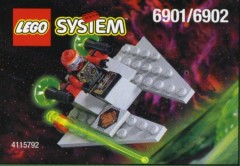
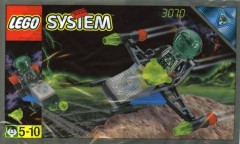
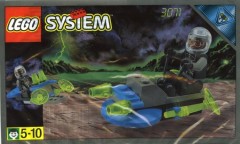
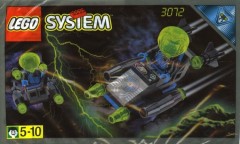
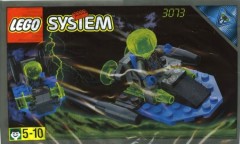
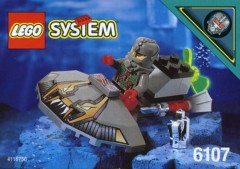
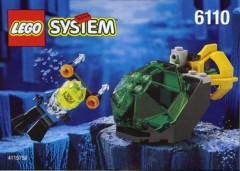
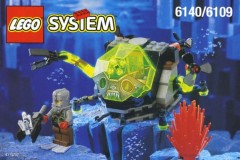

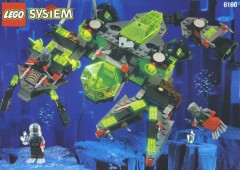
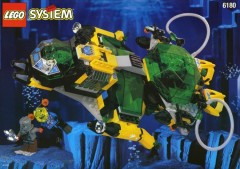
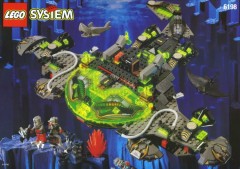
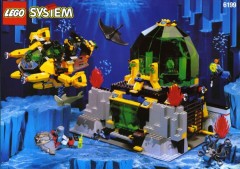
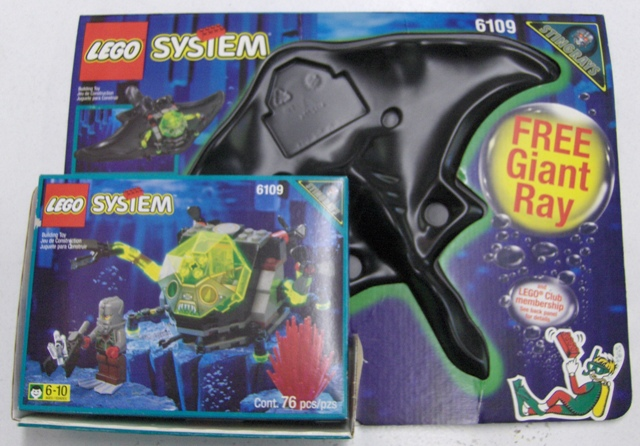

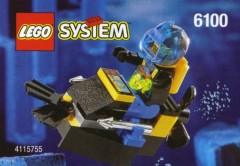
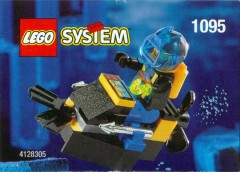
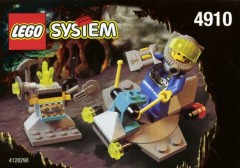
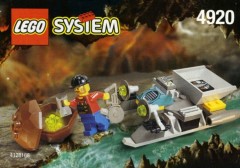
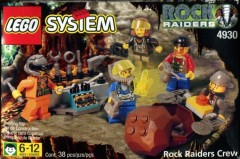
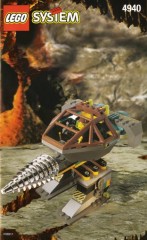
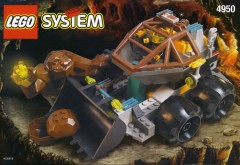
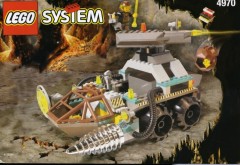
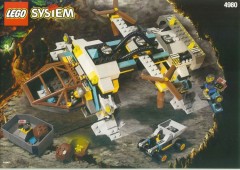
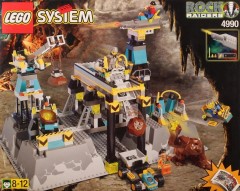
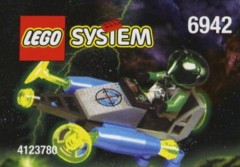
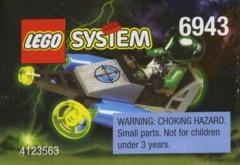
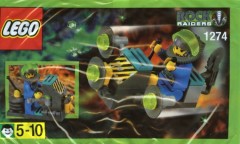
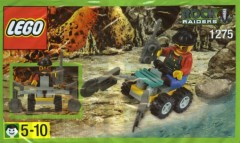
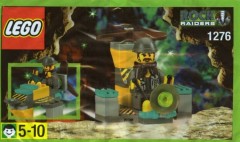
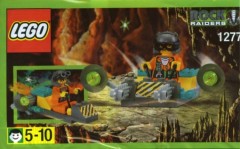
Did you know that for much of the original run of LEGO Space from 1979-1999, LEGO's set numbering corresponded to the price points of various items? It's true!
I was inspired by BrickLists made by Brickset user Novelty, for what they termed "impulse", "small" and "larger small" Space sets. These BrickLists have some great annotations and I recommend checking them out!
For my list, I've made the unusual choice to include both Aquazone and Rock Raiders, themes which fall entirely outside the Space numbering scheme. The earliest Aquazone offerings were released in 1995, an "off year" for LEGO Space; the earliest prototypes that would eventually become Aquazone are referred to as "Seatron", with a prototype monorail set even crossing over with Futuron. Half the sets came out the following year, 1996, alongside Exploriens, but these back-filled gaps in the Aquazone numbering scheme by occupying different price points, making it clear that all of these sets were planned from the outset. As for Rock Raiders, although the theme represented a shift in design philosophy towards character-based storytelling, the sets themselves otherwise continued in exactly the same tradition as Insectoids and other Space themes. If anything, it was Life on Mars which marked a more substantial shift, with its new price points, faction-based play, and de-emphasised unified aesthetic.
Arranged by price point, it's easier to observe certain patterns within and across the ranges. Often, LEGO's designers will appear to release the same set at a different price point: M-Tron has two wheeled cranes; Spyrius features two flying saucers and two wheeled robots; the Aquasharks have a well-proportioned shark submarine, a stubbier shark, and an expanded-out shark base. Something I've never really seen anyone remark upon is just how nonsensical the Insectoids' Celestial Stinger is: what kind of insect even is that? It uses all the same specialised elements as the Sonic Stinger, but where those pieces are clearly designed for that wasp-like form, in the larger set they are remixed into meaninglessness. In this list, I've highlighted certain sets where many of a given subtheme's new specialised elements appear to have been designed for that specific model, and then repurposed for other sets in the range.
As early as 1983, in North America, LEGO began repackaging multiple sets together into a single "value pack", with the smallest set typically being marketed as coming "free" with the others. Beginning in 1985, these value packs were instead designed as bespoke products: two entirely new sets with numbering outside the usual system. Most databases separate out the sets into individual listings, as they were often given individual set numbers, creating the misguiding impression that these were still bundles of sets that were originally sold individually, but this was never the case: the packaging would typically explain that the value of the pack (and the associated saving) was calculated based on the RRP of comparable sets. I'm not actually sure which price points these typically were; the size of set varied, and beginning in 1988, the value packs switched to a different format of between two and five sets from different themes, as a kind of sampler for LEGO's whole range. With these being exclusive to the US, it's unclear to me whether the set designers for a given theme would also produce these promotional items, or if a dedicated team would work on all the promotional products each year, separately from the development of the theme itself. Curiously, the value packs would typically include a set for the previous year's subtheme; perhaps with set lead times, they could only use parts which were already in production, or they didn't want to appear to be discounting brand-new product?
Very similarly, beginning in 1992 with Blacktron II (which otherwise debuted in 1991), a new, even-smaller $2 ($2.75 S@H) price point was introduced for "impulse" sets, consisting of a minifigure and a tiny vehicle, much like the kind of polybags one finds on magazines or in promotions in the present day. Most of these sets were available in both a box and a polybag, but they weren't always present in the main catalogue. Four Space "impulse" sets were repurposed for sale by the company Kabaya in Japan; the idea is that a small toy is sold with a single piece of candy, technically making the product a food item, allowing it to be sold tax-free. Assortments appear to have typically consisted of four sets, but LEGO would only design one impulse set per theme per year, so Insectoids and Rock Raiders each got a unique range of four tiny sets designed specifically for Kabaya, separate from the main range. Beginning with 1988, I've shunted all these impulse sets and value packs up a year, to display alongside their associated themes.
Several themes were designed exclusively for the US market: 1995's Unitron, and 1996's Roboforce and Aquaraiders. Again, something you rarely see illustrated by databases is that 6991 Monorail Transport Base was actually released as a standalone product in 1994, alongside Spyrius sets (and even included a Spyrius minifigure). I can only assume that LEGO wanted to release another big monorail, but that the design team felt it didn't make sense for Spyrius, so instead pitched it as the base that Spyrius were spying on...? Then, the remaining three Unitron sets were created for North America the following year, recycling the same pieces. Those sets occupied a very narrow range of price points, which were also used for Roboforce and Aquaraiders the following year.
The $30 ($33 S@H) price point has very inconsistent numbering, and two sets in particular (Exploriens 6938 Scorpion Detector & Aquaraiders 2161 Aqua Dozer) appear to have actually been sold in the Shop @ Home catalogue for $27.50, making them a separate, uncommonly-used chepaer price point. Meanwhile, Spyrius 6939 Saucer Centurion was in the catalogue for $29.75, right in the middle. As the 693X number range appears to encompass all of these sets to some extent, I've sort of just lumped them together; if you have any insight into this price point, let me know!
To try and find the original RRPs for these various price-points, I consulted seasonal catalogues from US retailers JCPenney, Sears and Montgomery Ward.
| 1979 | 1980 | 1981 | 1982 | 1983 | 1984 | 1985 | 1986 | 1987 | 1988 | 1989 | 1990 | 1991 | 1992 | 1993 | 1994 | 1995 | 1996 | 1997 | 1998 | |
|---|---|---|---|---|---|---|---|---|---|---|---|---|---|---|---|---|---|---|---|---|
| JC Penney | ||||||||||||||||||||
| Sears | ||||||||||||||||||||
| Montgomery Ward |